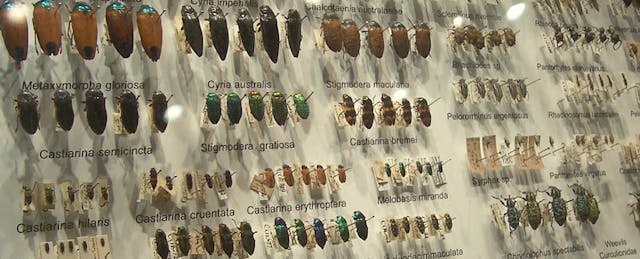The next time you find yourself sitting next to an edtech entrepreneur, ask how his or her product fits within the overall landscape of current offerings. Our bet? The response will be along the lines of “Well, no one is really doing what we’re doing.”
Despite $4 billion flowing into the edtech market since 2010, we all seem to think that our products have no competition. The irony is, when we describe them, they all basically sound the same. There seems to be edtech Kool Aid, and everyone is drinking it. The ingredients began with the deep insights of Christensen & Horn’s Disrupting Class, but have since devolved into entrepreneur buzzwords: “platform,” “disruptive,” “adaptive” and most importantly, “personalized.”
These two issues--the edtech community’s competition denial, and the lack of precise, mutually understood language to describe what products do--make it virtually impossible for end-users to differentiate between products in order to make informed decisions. As such, we run the risk of souring the market by confusing customers, masking results and chilling purchasing.
“Personalization” is now increasingly expected. But the word is used in so many ways, by so many people, that it has lost whatever meaning it once had. If we want to have a substantive conversation about the role of innovation in higher education, we must first make sure we’re speaking the same language.

We aren’t the only ones who think this conversation is needed. UCLA professor Noel Enyedy, quoted in EdSurge, noted that “’Personalized Instruction’ is too broad and vague an umbrella term to allow for meaningful evaluation or to guide policy.” The Gates Foundation has also engaged on the topic, funding a white paper that provides a sample taxonomy for adaptive solutions.
We and our colleagues in the ed-tech community would like to continue the conversation about a shared Taxonomy for Personalized Education.Our hope is that this conversation can lead to increased transparency and clarity for customers so that they can quickly evaluate their options against their goals.
Taxonomies are hard: Even Bloom’s famous taxonomy is still controversial 50 years later. However, they do provide an important common framework for discussion. If we want to mitigate the challenges endemic in the current market, we need to provide the language for both the providers and purchasers to engage in an efficient and informative conversation. The Gates taxonomy is a step in the right direction, but it does not help with identification of where a solution fits within the student life cycle.
To start, we should simply ask--what is personalized? Is it the enrollment and admission process? Is it the sequence of courses that students must do? The coaching and career advice we provide them? Or is it the specific, intelligent and personalized feedback that students get when they make a mistake in a homework assignment?
Building the Taxonomy
The reality is that all these and more can be personalized. When we first met and discovered that we both offered a “platform” for “personalized education” in higher education, we were both quite understandably nervous. This unease was what compelled us to explore further and develop the Personalized Education Taxonomy.
We view the personalized educational experience as a layered process. At the top is the admissions process (recruitment and admissions, as well as personal degree advice and ongoing personal coaching), followed by an individualized curriculum (personal scope and sequence of courses). At the end is the actual learning experience, where the sequence of activities within a lesson, as well as the feedback a student receives, changes according to his or her needs or actions.
Our companies provide a great example of how this taxonomy would work. Both Smart Sparrow and Fidelis would consider themselves part of a personalized educational experience. But the technologies we use and the outcomes we create are very different.
At the very top of the taxonomy are companies that help personalize the admissions or application process. This includes tools that help students match more effectively to colleges and universities, or companies like Ellucian that help institutions personalize their recruitment process. One level down, Fidelis provides support for students as they begin their college path: tailored learning plans, as well as social communities that foster relationships to peers, mentors and coaches to provide personal support and guidance.
Fidelis focuses on what students learn, with whom, and why. “How,” however, is intentionally not the realm of Fidelis, or any LRM. But understanding how students learn best, and adapting to that, is exactly where other tools, like Cerego, CogBooks or Smart Sparrow focus. By giving professors and instructional designers the tools they need to create adaptive learning experiences, these tools offer students adaptive sequences of activities feedback. And with the data from these learning experiences, teachers have the ability to personalize their lessons, even outside of the platform itself.
Our solutions are certainly not the only ones that fit within the taxonomy (and it wouldn’t be a very good taxonomy if they were!). However, by describing solutions in relation to the taxonomy, vendors should be able to explain more precisely how they facilitate the personalized educational experience, even within a 30-second elevator pitch.
Ideally, this taxonomy--especially when combined with others such as Gates’--helps brings transparency to both educators and the companies who serve them, and facilitates a more active push-pull relationship between developers and buyers, who will be empowered by this clarity to identify new areas of need and drive product development.
Only by ensuring that we are all truly speaking the same language around education technology can we have a meaningful conversation, and, in the end, find what we’re looking for.


